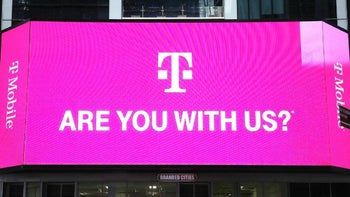Xiaomi 13 Pro vs iPhone 14 Pro vs Galaxy S23 Ultra: Camera Comparison

The new generation of smartphone cameras is coming and it features larger sensors and more technical capabilities, but will these innovations make a difference in the actual photo and video quality?
For this camera test, we have the brand new Xiaomi 13 Pro, the company's flagship phone for 2023 and it comes with an impressive camera system. The star of the show is a new and much bigger 1-inch type camera sensor that promises big improvements, but we also get a revolutionary new zoom camera that has one feature we have never seen before on a smartphone.
So let's see if this new Xiaomi 13 Pro can actually beat the camera quality of the popular iPhone 14 Pro Max and Galaxy S23 Ultra in a direct camera comparison.
Read more:
Camera Specs:
The defining feature of the Xiaomi 13 Pro is its larger than usual main camera sensor, and the larger the sensor, the better it gets at gathering light which helps it capture cleaner photos and videos at night.
| Xiaomi 13 Pro | Apple iPhone 14 Pro Max | Galaxy S23 Ultra | |
|---|---|---|---|
| Main camera | 50MP, 23mm f/1.9, 1" sensor | 48MP, 24mm f/1.8 | 200MP 23mm f/1.7 |
| Ultra-wide | 50MP, 14mm f/2.2 | 12MP, 13mm, f/2.2 | 12MP, 13mm f/2.2 |
| Telephoto | 50MP 3.2X zoom f/2.0 | 12MP, 3X zoom, f/2.8 | 10MP 3X zoom, f/2.4 10MP 10X zoom, f/4.9 |
| Front | 32MP with 1080p video | 12MP with 4K video | 12MP with 4K video |
Xiaomi Color Profiles
Before we look at the photos from all the phones, you should know that you have two different color profiles in the Xiaomi camera app. The Leica Vibrant one has more vivid colors and a typical sharper "phone" look, while the Leica Authentic has more film-like colors, but also a very noticeable vignetting. Because of the strong vignetting, we used the Leica Vibrant mode for this comparison.
Main Camera - Daytime
Perfectly capable!
It's no surprise that in ideal conditions, all three phones do a great job, but interestingly, the Xiaomi 13 Pro portrays the greenery in darker tonalities, which is not quite realistic.
In the second shot, the differences between the three are minimal and mostly boil down to the color science of each company. Xiaomi goes for slightly warmer colors with a bit more saturation, the iPhone prefers slightly cooler colors, and the Galaxy also has a warmer look.
In this third shot we see something that we noticed on a few photos out of the Xiaomi 13 Pro: highlights can be a bit overexposed and lacking definition, as you can see in the bottom part of the image near the stairs, the other two phones don't have that issue.
Detail
At 12MP default mode, not much of a difference
As all three phones, output 12-megapixel photos in the default shooting mode, there isn't a giant variation when it comes to the amount of resolved detail.
However, this crop illustrates the specific processing for each of the phones, and there you can certainly see differences.
Low Light
The 1-inch sensor makes its presence known
The big promise of the 1-inch type sensor on the Xiaomi 13 Pro is way better low-light and night time shots, so do we actually get that?
In this first shot, the Xiaomi phone strikes a good balance: the photo is not too bright, or too dark, it's just right and you have a good amount of detail.
In the second photo above you really start to notice the advantages of the larger sensor. Notice how the Xiaomi phone has preserved the detail in the highlights in the lamps beautifully and far better than the Galaxy or the iPhone. It overall captures a lot more light, as you can see the greenery at the bottom also looks brighter, while it appears dark on the other phones.
However, on this night shot, you can see that only the iPhone gets the white balance correctly, while the Xiaomi and the Galaxy give the photo way too warm colors.
Ultra-wide
Similar color processing as the main camera
We see the same kind of processing with the ultra-wide as with the main camera here on the Xiaomi, so it's definitely not a coincidence. The grass is a bit too dark, while the other two phones do a better job maintaining a proper exposure across the whole frame. Still, in terms of detail, the Xiaomi 13 Pro does a great job, and overall the image is on par with the other two phones.
The above picture is a great illustration of the color science on all three phones as you can spot the more contrasty look out of the iPhone, then the Xiaomi with a more neutral shot and the Galaxy with those more saturated colors.
In low light, however, the ultra-wide snapper on the Xiaomi is not as capable and you can see it loses out in terms of detail to both the iPhone and the Galaxy. The Samsung phone in particular really stands out here in a good way.
However in this next picture, the Xiaomi manages to pull ahead. The iPhone is just way too dark, this picture is barely usable as it is, and the Galaxy gets the white balance wrong, while the Xiaomi has both the detail, dynamic range and the proper colors to stand out.
Zoom Comparison
Can the Xiaomi beat the iPhone and the Galaxy?
At 3X zoom, both phones do a good job as they have a native 3X lens (3.2X on the Xiaomi), but we really think that the bleak color out of the Xiaomi and the Galaxy does not help, and it's the iPhone that stands out during the day.
In low light, the Xiaomi struggles with white balance as it's way too warm, leaving the Galaxy to dominate this shot.
At 5X zoom above, neither of the phones has a native lens, but the quality out of the Galaxy has degraded quicker than on the others and it has less detail.
The night shot out of the Xiaomi has the most dynamic range and detail and is overall very impressive, if it wasn't for the white balance issue, but still we think it wins this round.
At 10X the native periscope lens on the Galaxy kicks in giving it an advantage, but it's not as huge as you might think. Interestingly, the Galaxy uses the 10X f/4.9 zoom camera even at night, which is really impressive (many phones switch to a crop from the main camera in such conditions).
Portrait Mode
Say cheese!
Daytime portraits out of the Xiaomi 13 Pro turn out good looking, but a bit moody too with a fair bit of added contrast. We like the quality, though, and it's on par with the iPhone and the Galaxy.
In low light, the Xiaomi is not quite as good with portraits as the Galaxy, which is the current portrait mode king, but it's not too far off.
Selfies
Some tricks we have seen before
We see the typical image processing for selfies that we know happens on many Chinese phones: the face gets tuned to look whiter, smoother, and a bit fake, but some people may actually like this look, it's just not a very natural one.
In low light, the Xiaomi selfie camera also performs very well as you can see above.
Conclusion
So how good is the new Xiaomi 13 Pro and is it the new camera king?
Well, not quite, but it's a capable performer that ranks close and sometimes outclasses the competition from Apple and Samsung.
We think the color science and slight issues with exposure hold the Xiaomi down during the day, but at night this camera takes over and shows that a larger sensor does make a difference. The dynamic range out of the Xiaomi 13 Pro at night is better and if there wasn't the occasional issue with white balance, it's a very good performer.

The Galaxy and the iPhone are consistent cameras that we have discussed many times, and they still hold a few advantages, as the Galaxy has the best zoom and portrait mode performance, while the iPhone tends to capture very pleasing colors that are not as saturated and crazy as the Galaxy.
So... which phone was your favorite for this comparison, and why did you like it?














































































Things that are NOT allowed: